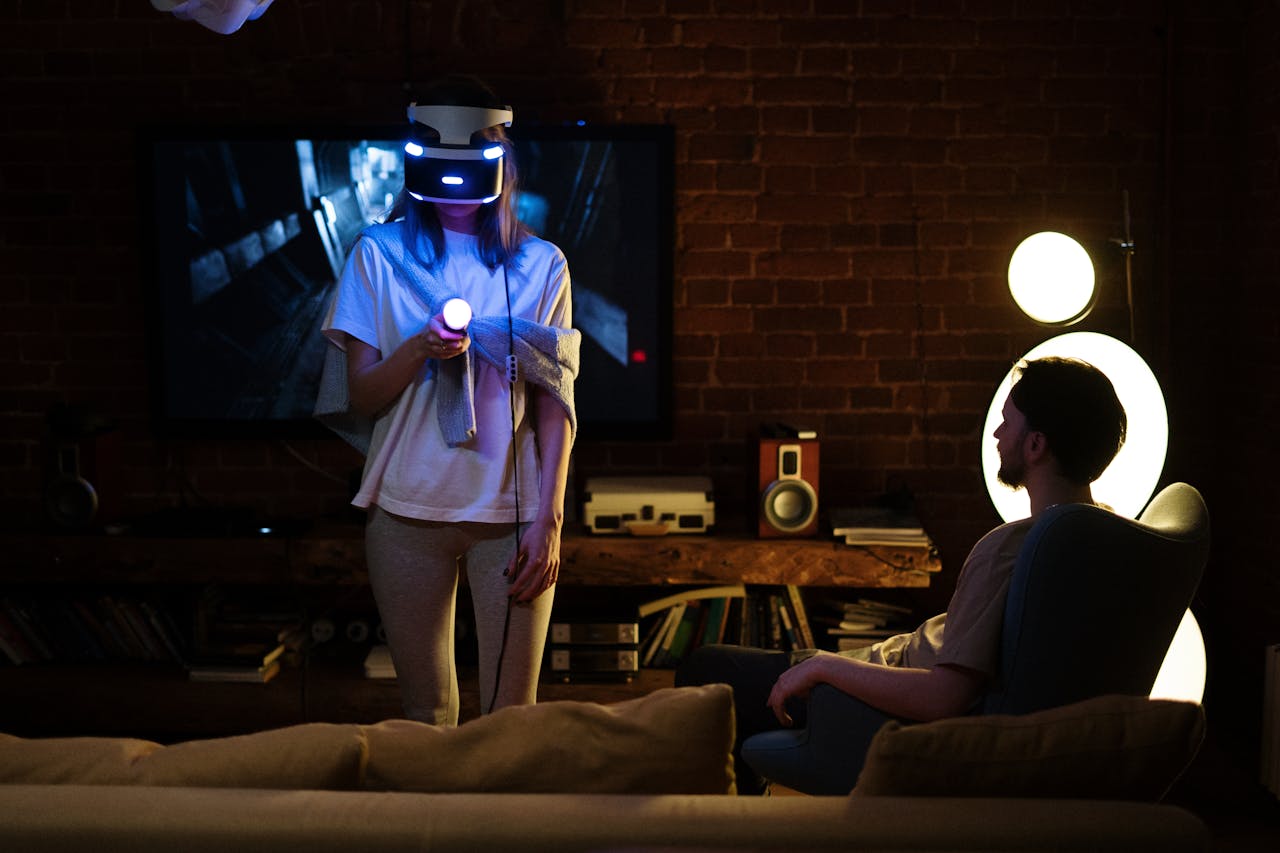Virtual Reality (VR) is an exciting way to immerse yourself in games, explore new worlds, and even work out. But to get the best experience, it’s important to set up your VR play space correctly. A well-organized VR play space setup ensures you can move freely without bumping into things, keeps you safe, and makes your VR experience more enjoyable. In this guide, we’ll cover some essential tips and tricks to help you create the perfect VR play space.
Why a Proper VR Play Space Setup Matters
Having a dedicated space for VR is crucial for several reasons:
- Safety First: When you’re in VR, you’re completely immersed in a virtual world, which means you’re not always aware of your surroundings in the real world. A well-planned VR play space setup prevents accidents by giving you plenty of room to move without tripping over furniture or hitting walls.
- Enhanced Experience: A clutter-free space allows you to move naturally, making your VR experience more immersive and enjoyable. Whether you’re dodging bullets, swinging a sword, or dancing to the beat, you’ll appreciate the freedom to move around.
- Comfort: Setting up your VR play space with comfort in mind means you can enjoy longer sessions without feeling cramped or uncomfortable. Good ventilation, proper lighting, and comfortable flooring are all important factors.
How to Choose the Best Location for Your VR Play Space
The first step in your VR play space setup is finding the right spot in your home. Here’s what to consider:
- Size of the Room
- Ideally, your VR play space should be at least 6.5 x 6.5 feet (2 x 2 meters) to allow for free movement. This size is perfect for most VR systems, providing enough room for you to walk around without constraints.
- Clearance Around You
- Make sure there are no obstacles within your play space. This includes furniture, pets, or loose items on the floor. Clear out anything that could trip you up or get damaged while you’re playing.
- Height Considerations
- If you have low ceilings or ceiling fans, be cautious, especially if your VR games involve reaching or jumping. Make sure your space has enough vertical clearance to avoid any accidents.
- Lighting
- While VR headsets don’t require strong lighting, it’s good to have some ambient light to help you see your surroundings when you take off the headset. Avoid direct sunlight or bright lights that could interfere with the headset’s sensors.
Essential Tips for Setting Up Your VR Play Space
Once you’ve chosen the perfect spot, it’s time to optimize it for the best VR experience:
- Marking Your Boundaries
- Use the VR system’s built-in boundary setup to create a virtual “guardian” or boundary that appears when you get too close to the edge of your play space. You can also mark the physical floor with tape or rugs to help you stay aware of your real-world boundaries.
- Managing Cables
- If you’re using a tethered VR headset (one connected to a PC or console), managing the cables is crucial. Consider using ceiling hooks or cable management systems to keep the cables off the floor, preventing tripping and allowing for more freedom of movement.
- Flooring
- Soft flooring like foam mats or carpets can make standing and moving for long periods more comfortable. They also provide a bit of cushioning if you accidentally drop a controller or trip.
- Ventilation and Temperature
- VR can get intense, especially during physical games. Make sure your play space is well-ventilated and kept at a comfortable temperature to avoid overheating or discomfort.
- Safety Gear
- If you’re concerned about bumping into walls or furniture, consider wearing padded gloves or wrist guards. These can help protect you if you accidentally hit something during an intense gaming session.
Advanced Tips for VR Enthusiasts
For those who spend a lot of time in VR or have a dedicated space, here are a few advanced tips:
- Custom VR Rooms
- If you’re a serious VR enthusiast, you might consider dedicating an entire room to VR. This allows you to optimize the space fully, including installing specialized flooring, lighting, and soundproofing.
- Wireless Solutions
- For those using PC-tethered VR headsets, consider investing in wireless adapters or systems that allow you to move freely without worrying about cables. This can significantly enhance your experience.
- Enhancing the Environment
- Adding elements like blackout curtains, LED lighting, or even sound systems can make your VR play space feel more immersive. You can tailor the environment to match the type of games you play, whether it’s a calming atmosphere for meditation apps or a dynamic setup for action-packed games.
Conclusion
Setting up your VR play space doesn’t have to be complicated, but it does require some thought to ensure safety, comfort, and the best possible experience. By following these tips and tricks, you’ll be well on your way to creating a VR play space that lets you fully enjoy everything virtual reality has to offer.









